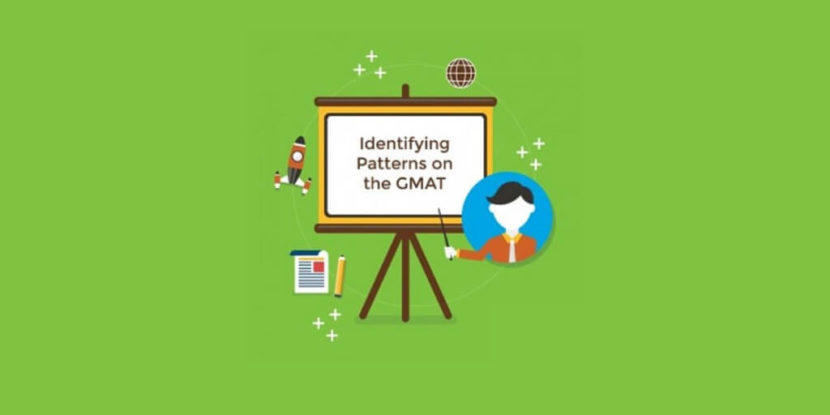Let us first understand the GMAT before we delve deeper into the topic of “patterns”. We believe that the reader must first understand what the GMAT is.
GMAT is a standardized test. Think about it – within 78 questions (many of which are experimental so the actual number of questions are fewer) the GMAT can accurately predict your score within a standard deviation of +/- 29 points.
This means if you take the GMAT on a Tuesday and score, say, 650 then without any prep, if you were to take it again on Thursday, your score should be either 620 or 680. That is pretty remarkable if you think about it. Most of the tests that we have taken are liner and not adaptive (like the GMAT – read more about it here)
This means the GMAT test-setter has to conform to very strict guidelines on what makes a “standard” GMAT question. There is very little leeway to change question structures or what can be asked.
As a GMAT question creator ourselves (and through our interactions with others in this business), we can tell you that the hardest job is to condense the question into its CORE part. Once you do so, you will realise that there are only so many ways that GMAT can test you.
Wait! I hear you. You are asking –
“What does all this mean for me?”
The answer is: Once you understand the “framework” of what GMAT can (or cannot) test, it becomes a lot more easier for you to study for the test. These “frameworks” or “patterns” unfortunately don’t exist in any rules book – you need to practice official GMAT questions
To make things easier for you, we have put here some of the learnings and GMAT patterns that I have had through years of teaching the GMAT:
1. Sentence Correction:
The biggest mistake people make is thinking this is a test of grammar. It is not. If they wanted to test your grammar to give admission to Harvard Business School, they would have asked for your 5th standard score report.
This is a test of logic based on some finite grammatical concepts. Understand the meaning and the logic behind the sentence and the rules of grammar should automatically fit in. Try to make this a test of grammar and you will realise that it will make no sense.
2. Critical Reasoning:
Don’t drown yourself in theory. There is very little that you need to know. So keep the Powerscore CR bible out. Instead try to focus on WHAT each question is trying to ask. As it is a standardized test you will realise that the test-taker is basically going to ask you from a set pattern.
For example an objective data would be provided and a subjective conclusion drawn from it. Something like I have a 770 on the GMAT so I will get into ISB. Or the movie collected 250 crores in the box-office so it is a good movie. You get the gist.
3. Reading Comprehension:
The shortest way to put it is – RC is not about reading – it is about answering questions! We see so many students worried sick about understanding the passage (and spending way too much time on the test trying to do so). Baaad strategy. We would not recommend spending more than a few quick minutes before jumping to the questions.
While solving the questions we’d revisit the passage multiple times (after all this is not a memory test – it is a comprehension test). Your focus should be on getting the answers – not on understanding the passage.
4. Problem Solving:
On the GMAT, you will never get a question that will depend on any formulae or theory that a 10th standard student won’t know. So technically speaking, *any* GMAT quant question can be solved by a high school teenager.
What the GMAT (and effectively the top b-schools) are looking at is – Can this person take a set of data, manipulate it, and come out with a result? Theory is not the reason – don’t externalise the problem. Just solving good quality official questions with an acute analysis of the approach should be enough.
5. Data Sufficiency:
The difference between a Q47 and Q51 is usually this : Q47 getter will try to “solve” a DS problem. A Q51 getter will try to “answer” the DS problem correctly. There is a slight change in approach that is required.
One common trap I have noticed if you are picking C as the answer then be careful – usually putting both the data points will make you “solve” the question very easily. If you analyse carefully, you will realise that taking either one (or one alone) should be sufficient so you should be “solving” it as A or B or D. So, don’t solve – answer the question.
If you have just started your prep and are not able to figure out this then bookmark and revisit this blog when you are done. For those who are already a few weeks/months into their prep – you know what we are saying 🙂
You are definitely going take the GMAT. So, now that you know the patterns, you can also check out how to decide the GMAT section selection order. This will help you practice better for during your mock GMAT.
Now, if you are going to take the practice tests, here’s what you should know before you actually take them.
Don’t worry! If you need help, just comment below and we’d be more than glad to help.
All the very best!
Check out our E-Book library and get deeper insights into the GMAT!
[button size=”medium” color=”green” align=”center” link=”http://gmat.crackverbal.com/free-resources/ebook-library/”]Explore E-Books here![/button]

